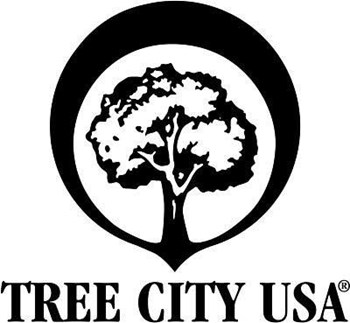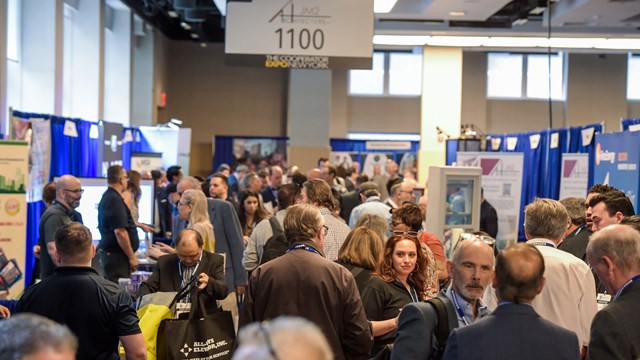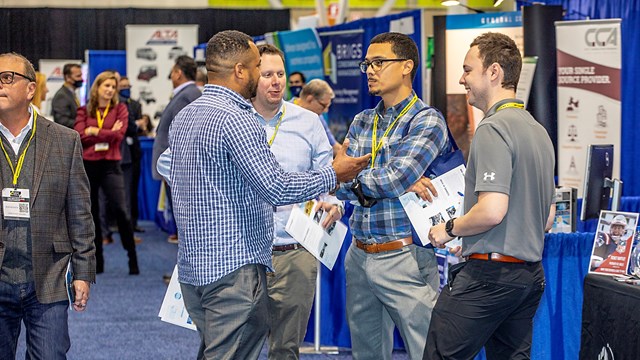
Since it was founded in 1972, on the centennial anniversary of the very first Arbor Day, the National Arbor Day Foundation (NADF) has been steadfast in its mission to "plant, nurture, and celebrate trees."
The organization, with founder John Rosenow still at the helm as president, is active in educating the public about the beauty and significance of trees in our world and in our lives.
Headquartered in Lincoln, Nebraska, NADF staffs about 300 associates who work hard to promote the positive benefit trees have on the environment, in our communities, and even on our children. Through numerous programs, NADF enables thousands of towns and cities across the United States to follow its mission to plant, celebrate, and nurture trees.
"John Rosenow is tireless in his mission to inspire people," says Woodrow Nelson, director of communications for NADF. "I think that culture permeates throughout the entire organization. Everyone is very true to the idea that we should get the word out that it's a great thing for people to plant trees."
Forty miles away from the main program office is the birthplace of Arbor Day, Arbor Day Farm, which was part of the former estate of J. Sterling Morton, who founded Arbor Day back in 1872. Arbor Day Farm, owned and operated by NADF, is an activity-packed, learning-based resort right in the center of the country in Nebraska City, Nebraska.
Programs Plant Trees and Hope
In addition to offering membership status and benefits to nearly a million members nationwide, NADF also sponsors many programs and initiatives that aid in carrying out its mission. One of the biggest initiatives this year is a comprehensive program for children called Nature Explore.
Nature Explore offers support materials for educators, caregivers, parents and grandparents of young children, ages two to eight. These resources are intended to help adults get children connected to nature.
"Research is showing that an early connection with nature really benefits these young children developmentally and behaviorally," Nelson points out.
NADF also publishes a series of 'idea books' that act as practical guides for educators. The Learning with Nature Guidebook is one such idea book that helps educators create outdoor classrooms. It offers everything from advice on design from the International Society of Landscape Architects to lists of natural materials educators can use to build these classrooms.
Tree City USA—A Nationwide Effort
NADF also offers the Tree City USA program as a means of connecting to over 3,100 towns and cities across the nation. This program, which works with state coordinators, state foresters, city foresters, mayors, and any concerned community members, is a proactive way for NADF to support communities in their efforts to plant more trees and also to learn how to take good care of the ones they already have.
Tree City USA, which is sponsored in cooperation with the USDA Forest Service and the National Association of State Foresters, educates people on a community-wide level about the value of trees in our lives. NADF writes and publishes about 40 educational bulletins that help a city's tree board learn about different topics related to planting and maintaining trees. Topics range from 'Resolving Tree-Sidewalk Problems' to 'Living with Urban Soils' to 'How Trees Can Save Energy.'
New Jersey is home to more than 125 Tree City USA participant communities, some of which have been in the program from its inception, and some of which are relative newcomers. Among New Jersey's 21 counties and 566 municipalities, 131 towns and cities are officially designated as Tree City USA.
Paramus is an excellent example of the Tree City USA program at work. According to the borough's website, Paramus is the "Number One Tree City USA in the state of New Jersey," and has been a participant in the program for over three decades—though the borough has been committed to tree-planting for even longer. Since 1951, the Shade Tree and Parks Commission has been planting trees throughout Paramus, and today the borough has thousands of shade trees lining its streets.
For Paramus, the move to become a Tree City just made sense. According to the borough website, "Because of our geographic location, Paramus is bisected by major highways that produce pollutants and dust. Trees not only absorb and mitigate pollutants and dust but significantly reduce noise in residential areas. Transition tree buffers have been developed between the residential and commercial properties to also help eliminate pollutants and noise from the highways. An extensive street tree planting has been established and is being maintained by the Shade Tree & Parks Commission. Nearly 30,000 street trees make up the community street tree program in Paramus."
In addition to beautifying the streets and sidewalks of Paramus, the borough's thousands of living trees also help residents save on energy costs by sheltering homes from the elements, and raise property values.
The benefits towns like Paramus have gotten from being Tree Cities can be applied to just about any other community, regardless of location or size. Tree City USA communities may also obtain grants or funding from forestry programs more easily.
"These programs look very carefully at cities, asking 'Are they a Tree City USA community?' And, if so, that usually gives the grantor a little more confidence," notes Nelson. "They think, 'Okay, this community really does care.'"
Before becoming a Tree City USA, however, cities or towns must meet four requirements: 1) they must have a tree board or tree department made up of dedicated people who will look after the community trees; 2) the community needs to have an established tree care ordinance that gives the tree board responsibility for implementing an annual community forestry work plan; 3) the community needs to spend at least $2 per capita on their forestry program, maintaining trees, cleaning up after their trees, and planting new trees; and 4) the city must observe Arbor Day, which falls on a different day depending on the state. (New Jersey's Arbor Day is the last Friday in April.)
"We have 3,100 Tree City USA communities nationwide and they all take great pride in being recognized as such," Nelson says. "This is a great program where we work with communities and support them in their mission to make their city's trees and their communities healthier—and to plant more trees."
Goals, Successes and Programs
The NADF has some other exciting programs in the works as well, says Nelson. "Nature Explore, Tree City USA, and Replanting Our National Forests, are new programs that we're going to launch in a pretty big way this summer," he says. "Here's a scoop for you: It is our goal to plant nearly 2.3 million trees in national forests, since last year was a record [wildfire] year with over nine million acres of national forest land burned to the ground. And the U.S. Forest Service has had to divert so much of their budget to fighting the fires, they don't have the resources to go back and plant new trees in those forests that have been devastated. So we're on a real campaign."
Replanting burned forests and helping the National Parks and Wildlife people preserve and rehabilitate the natural environment underscores what the NADF is all about, Nelson continues.
"I would say, if we have one policy, it's just to stay positive—because we're making a very important difference to the earth and to the future. NADF is not driven by what corporations are driven by; rather, we're driven by a mission of simply making a difference."
And making a difference by improving natural resources is something Nelson and his organization are rightly proud of. "Creating the Nature Explore program is something we're proud of," he says. "Research has shown that a connection with nature is just so profound and makes such a difference with children. We're proud to not only understand the problem of nature deficit with children but also to package a program like Nature Explore so we can do something about it."
Resources for Trees
In addition to its many programs that encourage people to plant, nurture, and celebrate trees, NADF also offers a helpful website that provides everything from information about specific trees to a new 2006 Hardiness Zone Map that graphically separates the country into ten temperature zones that help people plant the appropriate trees for where they live.
"This Hardiness Zone Map has been a very popular spot on our website," says Nelson. "People are interested. Some people are just interested in global warming, but tree planters are interested in particular about how their climate may have changed and how that affects their different options for trees."
Another resource available on the website is extensive information about the various programs, including Tree City USA. People can get online to see if their city is already a Tree City USA. If it's not, the website will explain the application process.
The website also gives details about the many ways people can donate to NADF. Donors can help with reforestation, rescuing the rain forest, Katrina Tree Recovery, or the Western New York Tree Recovery. According to the website, donations will help in NADF's educational programs, conferences and seminars, planting, reforesting, and much more.
According to the website, planting a tree is a "gift of generosity and kindness and a worthy way to celebrate special occasions and pay tribute to life's many milestones."
"Instead of giving your father a necktie or a shirt—he already has plenty—you can donate $10 to the National Arbor Day Foundation and we'll plant ten trees in his name in a national forest and register those ten trees in his name in the U.S. Forestry Register," explains Nelson. "It's just a nice alternative to a gift."
Beauty and Pride
Planting trees and contributing positively to the greening of your community's environment not only improves value, but it also has a salutary effect on morale and community involvement.
"Most citizens want to live or conduct business in a beautiful place, a place they're proud of," says Nelson. "And it can really enhance the public image when you know your community has a tree board, when your community is spending a little bit of money taking care of its trees and planting new trees. It just establishes some great community pride."
If you're interested in turning your community or town into a Tree City USA, "You can contact the mayor's office," says Nelson. "We're finding that the mayors are really a great advocate of this program. It's hard to band together a whole bunch of council persons, but go to your mayor and say, 'Have you looked into this, it would be such a great way to get the community involved with parks, with street trees, with cleanup, with planting new trees, and just give us a great sense of community pride.' Cities often need that kind of thing."
Domini Hedderman is a freelance writer and a frequent contributor to The New Jersey Cooperator.





Leave a Comment